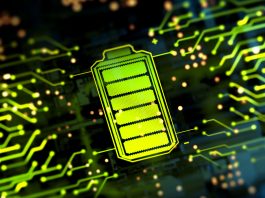A collaborative group of engineers have created a material that prevents inexpensive catalysts from degrading in cell-powered vehicles.
A collaborative team, including engineers at the University of Illinois Chicago, has developed a material that has the potential to give fuel cell-powered vehicles a competitive edge over the battery systems that currently power the majority of electric vehicles.
Compared to lithium batteries, fuel cell technology relies on catalyst-driven chemical reactions to generate energy. Lithium batteries can typically achieve a range of 100 to 300 miles on one charge, however they are also vulnerable to the high cost of cathode materials, manufacturing and require several hours to charge.
Fuel cell-powered systems
Alternatively, fuel cell systems take advantage of plentiful elements such as oxygen and hydrogen and can achieve more than 400 miles on a single charge – which can be accomplished in under five minutes. Unfortunately, the catalysts used to power their reactions are made of materials that are either too expensive (i.e., platinum) or too degradable to be practical.
Although, with the development of a new additive material, scientists can make an inexpensive iron-nitrogen-carbon fuel cell catalyst more durable. When added to the chemical reactions, the additive material protects fuel cell systems from two of its most corrosive by-products: unstable particles like atoms, molecules or ions called free radicals and hydrogen peroxide.
Findings from their experiments are reported in the science journal Nature Energy.
Reza Shahbazian-Yassar, Professor of Mechanical and Industrial Engineering at the UIC College of Engineering, and colleagues utilised advanced imaging techniques to investigate the reactions with the material, which is an additive comprised of tantalum-titanium oxide nanoparticles that scavenge and deactivate free radicals. The high-resolution imaging of the atomic structures allowed the scientists to define the structural parameters required for the additive to work successfully.
Electron microscopy
“In our lab, we are able to use electron microscopy to capture highly detailed, atomic-resolution images of the materials under a variety of service conditions,” explained Shahbazian-Yassar. “Through our structural investigations, we learned what was happening in the atomic structure of additives and were able to identify the size and dimensions of the scavenger nanoparticles, the ratio of tantalum and titanium oxide. This led to an understanding of the correct state of the solid solution alloy required for the additive to protect the fuel cell against corrosion and degradation.”
Experiments revealed that a solid solution of tantalum and titanium oxide is required and that the nanoparticles should be around five nanometres in size. The experiments also uncovered that a 6:4 ratio of tantalum to titanium oxide is essential.
“The ratio is the key to the radical scavenging properties of the nanoparticle material and the solid-state solution helped sustain the structure of the environment,” Shahbazian-Yassar added.
The experiments indicated that when the scavenger nanoparticle material was added to the reactions of fuel cell systems, the hydrogen peroxide yield was suppressed to less than 2% — which is a 51% reduction — and current density decay of fuel cells was reduced from 33% to only 3%.
“Fuel cells are an attractive alternative to batteries because of their higher driving range, fast recharging capabilities, lighter weight, and smaller volume, provided that we can find more economical ways to separate and store hydrogen,” Shahbazian-Yassar concluded. “In this paper, we report on an approach that gets us much closer to making fuel cell-powered vehicles and other fuel cell technologies a reality.”









